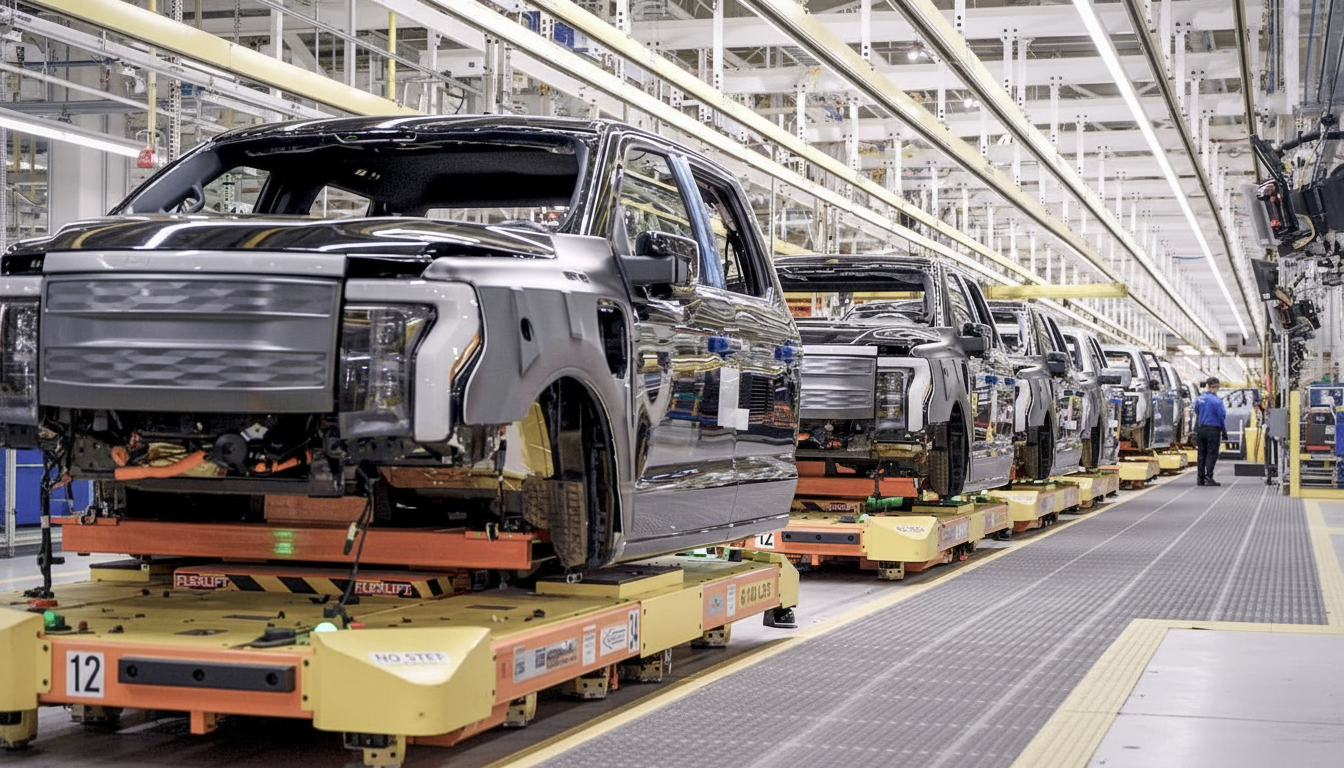Ford is hitting the brakes temporarily on its all-electric F-150 Lightning, leaving assembly idled at the Rouge Electric Vehicle Center in Dearborn while it focuses on producing gas and hybrid F-Series and Super Duty models. The move stands in contrast to Tesla’s earlier decision, under its co-founder and former chief executive Elon Musk, to gloat publicly about company profitability after becoming profitable only a handful of times over the course of more than a dozen years.
Why the F-150 Lightning Is on Ice: Aluminum Supply Crunch
The bottleneck starts upstream. An incident at Novelis’ Oswego, New York, plant in September put its hot mill out of action, and the flow of aluminum was restricted. Novelis has indicated it wants to restart that hot mill by December 2025, a schedule that leaves aluminum tight for months. Its conventional F-Series models contain less aluminum than the Lightning and have higher margins, making them more sensible to prioritize while supply is constrained, Ford says.

The company also notes dealer stocks as a cushion. A Ford representative said dealers have good F-150 Lightning inventories and will restart the Dearborn EV line when appropriate, but no date was provided. In the meantime, resources and workers are being redirected to build gas and hybrid F-150s and Super Duty trucks, which are essential for protecting the core franchise.
Sales context for the pause in F-150 Lightning production
Lightning demand has increased, but it remains a sliver of Ford’s truck universe. The automaker sold 10,005 Lightnings in the third quarter, with a year-over-year improvement of 39.7%. For comparison, the automaker sold 545,522 vehicles in the quarter, including 207,732 F-Series. In the first nine months of the year, Lightning sales totaled 23,034, up about 1 percent from the same period last year.
Yet even with those modest gains, the Lightning is the best-selling electric pickup in the U.S., Ford says. That status is part of a broader EV market that has chilled from the wild growth of previous years, a development monitored closely by companies like Cox Automotive, which have observed higher inventory and more aggressive discounting across the industry on electric vehicles. In that setting, a temporary hold on the Lightning to generate maximum profits from combustion and hybrid trucks is justifiable short-term action.
Financial Fallout And Ford’s Reprioritization
The Novelis disruption is expensive. Ford told investors that the event will shave up to $2 billion off fourth-quarter earnings. Add potentially as much as a $1 billion tariff headwind, and the company lowered its profit outlook for the year to $6 billion from $6.5 billion. Against that backdrop, diverting resources to high-margin F-Series is as much a balance-sheet play as it is an operational decision.
Ford will restore volume in 2026 when it runs a third shift to increase F-Series production by more than 50,000 trucks. Those increases are projected to create as many as 1,000 jobs. Rouge Electric Vehicle Center hourly workers will be moved next door to the Dearborn Truck Plant to back the ramp as Ford continues flexing capacity within its network and better match production with demand.

Impact to buyers and the broader auto supply chain
For shoppers, the pause probably means more consistent availability of gas and hybrid F-150s and possibly longer wait times for made-to-order Lightnings as dealer inventories dwindle. Incentives and pricing may vary by powertrain as Ford and its dealers work to manage stock and demand; the EV’s eligibility for federal tax credits will also remain tied to guiding battery-sourcing regulations.
For suppliers, the episode is yet another reminder of the risks of concentration. Novelis is one of the largest specialized providers of aluminum, and a single-plant outage had reverberations upstream in one of America’s highest-volume vehicle lines. You can bet that OEMs will revisit contingency planning, secondary sourcing, and inventory of critical materials—especially as lightweighting and electrification make vehicles even more dependent on aluminum and advanced light metals.
What to watch next as Ford navigates the aluminum crunch
There are now two clocks ticking: Novelis’ repairs, and Ford’s market calculus. A restart to the Oswego hot mill would alleviate material constraints, but Ford will also be keeping an eye on retail velocity, pricing power, and inventory health before flipping Lightning assembly back on. If truck sales stay strong, and electric pickup growth remains gradual, then a return to production should be phased rather than brash.
For now, the country’s most famous pickup maker is doing what makes sense — feeding the most profitable lines while it waits for a supply shock to end.
The message to the market is clear: the Lightning isn’t canceled, but until aluminum and margins match up, it won’t be the one dictating production in Dearborn.

